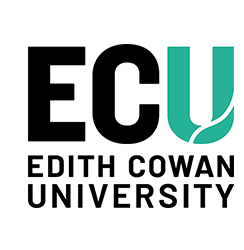Author Identifier
Ruirui Xu: http://orcid.org/0000-0001-6702-3555
Date of Award
2025
Document Type
Thesis
Publisher
Edith Cowan University
Degree Name
Doctor of Philosophy
School
School of Medical and Health Sciences
First Supervisor
Wei Wang
Second Supervisor
Christopher Abbiss
Third Supervisor
Manshu Song
Fourth Supervisor
Gengzhen Chen
Abstract
Background: Colorectal cancer (CRC) is among the leading causes of cancer morbidity and mortality worldwide, with prognosis heavily determined by stage at the diagnosis and risk of postoperative recurrence. Immunoglobulin G (IgG) N-glycosylation has emerged as a promising source of biomarkers reflecting tumour-related immune and microenvironmental changes.
Study Overview: This dissertation presents two complementary studies conducted in a Chinese Han population, each focused on the development of a distinct IgG N-glycan–based nomogram:
1. A Diagnostic Nomogram for Early-Stage CRC (Study I);
2. A Prognostic Nomogram for Postoperative Recurrence in CRC (Study II).
Study I: Diagnostic Nomogram for Early-Stage CRC (Stages I and II): A clinical case-control study recruited participants based on the following inclusion criteria: histologically confirmed CRC or colorectal adenoma (CRA), age- and sex[1]matched healthy controls, absence of autoimmune or other malignancies, and no prior CRC treatment. The prime cohort comprised 309 subjects (103 CRC, 103 CRA, and 103 controls) and further validated by an independent validation cohort (61 CRC and 61 controls). Plasma IgG N-glycan profiles were quantified by hydrophilic interaction ultra-performance liquid chromatography (HILIC-UPLC). LASSO selection identified key glycan traits, which were integrated via multivariate logistic regression into a diagnostic nomogram. Early-stage CRC (Stages I and II) patients exhibited elevated bisecting GlcNAc and agalactosylation alongside reduced sialylation and galactosylation (all p < 0.01). The diagnostic nomogram demonstrated high discriminative performance, with AUCs of 0.922 (95% CI: 0.875-0.969) in the prime cohort and 0.857 (95% CI: 0.770-0.944) in the validation cohort, outperforming conventional markers such as CEA and CA19-9. Calibration curves and decision-curve analysis further supported its clinical utility.
Study II: Prognostic Nomogram for Postoperative Recurrence: In the retrospective longitudinal multicentre cohort, 296 CRC patients (Stages I-III) were selected from 431 initially recruited participants after applying the following exclusion criteria: incomplete follow‑up, or death from non‑CRC causes prior to recurrence. The cohort was split into a training set (n = 208) and a validation set (n = 88). Clinical risk factors (e.g., nodal status, tumor differentiation) and glycan traits were evaluated using univariate and multivariate Cox regression models. Bisecting GlcNAc (HR: 1.29, p = 3.7 × 10⁻⁵), N2 nodal stage (HR: 8.67, p = 0.003), and poor tumor differentiation (HR: 2.50, p = 9.9 × 10⁻⁴) were identified as independent predictors of recurrence. The resulting prognostic nomogram showed strong predictive accuracy, with 2-4-year AUCs of 0.763-0.832 (training) and 0.855-0.859 (validation). Brier scores were all ≤0.175, and Kaplan-Meier analysis revealed significant recurrence-free survival (RFS) stratification (log-rank p < 0.001).
Conclusion: These two nomograms exploit distinct IgG N-glycosylation signatures for complementary purposes: one enhances early detection of CRC, and the other enables individualized prediction of postoperative recurrence risk. Both models outperform traditional biomarkers and offer practical tools for precision oncology. Future research will aim to validate these findings in diverse populations and investigate the biological mechanisms linking IgG glycosylation with CRC pathogenesis.
Access Note
Access to this thesis is embargoed until 7th November 2028
DOI
10.25958/1yqg-1h07
Recommended Citation
Xu, R. (2025). Development and validation of IgG N-glycosylation-based nomograms for early diagnosis and postoperative recurrence risk prediction of colorectal cancer in Chinese Han population. Edith Cowan University. https://doi.org/10.25958/1yqg-1h07

